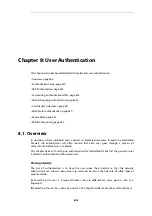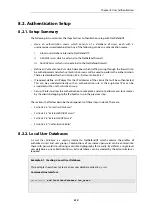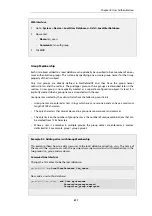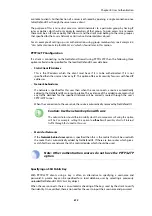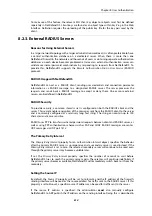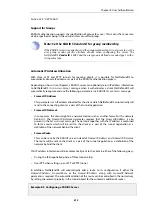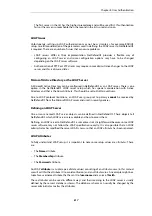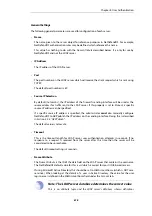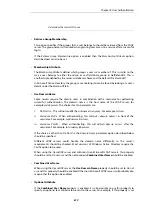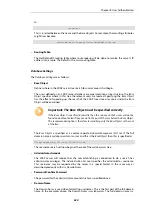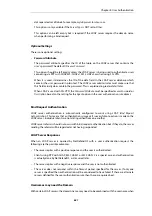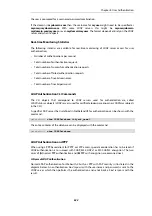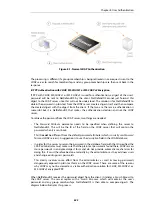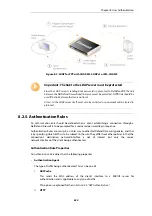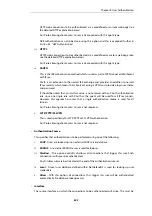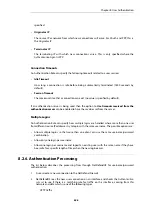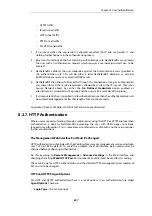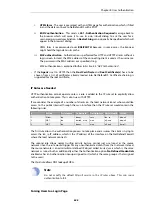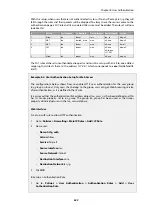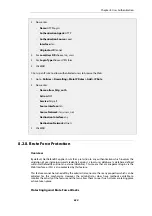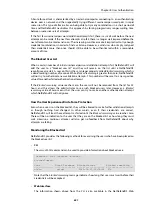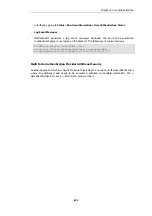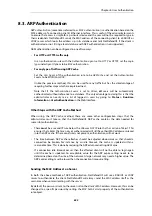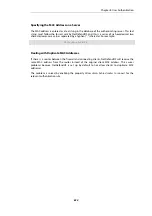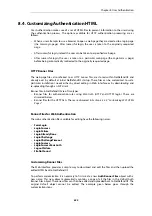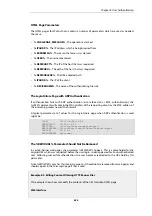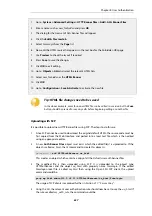
the user is prompted for a username/password combination.
If the domain is mydomain.com then the username for myuser might need to be specified as
[email protected]. With some LDAP servers this might be myuser@domain
mydomain.com\myuser or even mydomain\myuser. The format depends entirely on the LDAP
server and what it expects.
Real-time Monitoring Statistics
The following statistics are available for real-time monitoring of LDAP server access for user
authentication:
•
Number of authentications per second.
•
Total number of authentication requests.
•
Total number of successful authentication requests.
•
Total number of failed authentication requests.
•
Total number of invalid usernames.
•
Total number of invalid password.
LDAP Authentication CLI Commands
The CLI objects that correspond to LDAP servers used for authentication are called
LDAPDatabase
objects (LDAP servers used for certificate lookup are known as
LDAPServer
objects
in the CLI).
A specific LDAP server that is defined in NetDefendOS for authentication can be shown with the
command:
gw-world:/> show LDAPDatabase <object_name>
The entire contents of the database can be displayed with the command:
gw-world:/> show LDAPDatabase
LDAP Authentication and PPP
When using a PPP based client for PPTP or L2TP access, special consideration has to be taken if
LDAP authentication is to succeed with CHAP, MS-CHAPv1 or MS-CHAPv2 encryption. The two
cases of (A) normal PPP authentication and (B) PPP with encryption are examined next.
A. Normal LDAP Authentication
Normal LDAP authentication for Webauth, XAuth, or PPP with PAP security is illustrated in the
diagram below. An authentication
bind request
with the username and password is sent to the
LDAP server which then performs the authentication and sends back a
bind response
with the
result.
Chapter 8: User Authentication
622
Summary of Contents for NetDefendOS
Page 30: ...Figure 1 3 Packet Flow Schematic Part III Chapter 1 NetDefendOS Overview 30 ...
Page 32: ...Chapter 1 NetDefendOS Overview 32 ...
Page 144: ...Chapter 2 Management and Maintenance 144 ...
Page 284: ...Chapter 3 Fundamentals 284 ...
Page 392: ...Chapter 4 Routing 392 ...
Page 419: ... Host 2001 DB8 1 MAC 00 90 12 13 14 15 5 Click OK Chapter 5 DHCP Services 419 ...
Page 420: ...Chapter 5 DHCP Services 420 ...
Page 573: ...Chapter 6 Security Mechanisms 573 ...
Page 607: ...Chapter 7 Address Translation 607 ...
Page 666: ...Chapter 8 User Authentication 666 ...
Page 775: ...Chapter 9 VPN 775 ...
Page 819: ...Chapter 10 Traffic Management 819 ...
Page 842: ...Chapter 11 High Availability 842 ...
Page 866: ...Default Enabled Chapter 13 Advanced Settings 866 ...
Page 879: ...Chapter 13 Advanced Settings 879 ...

